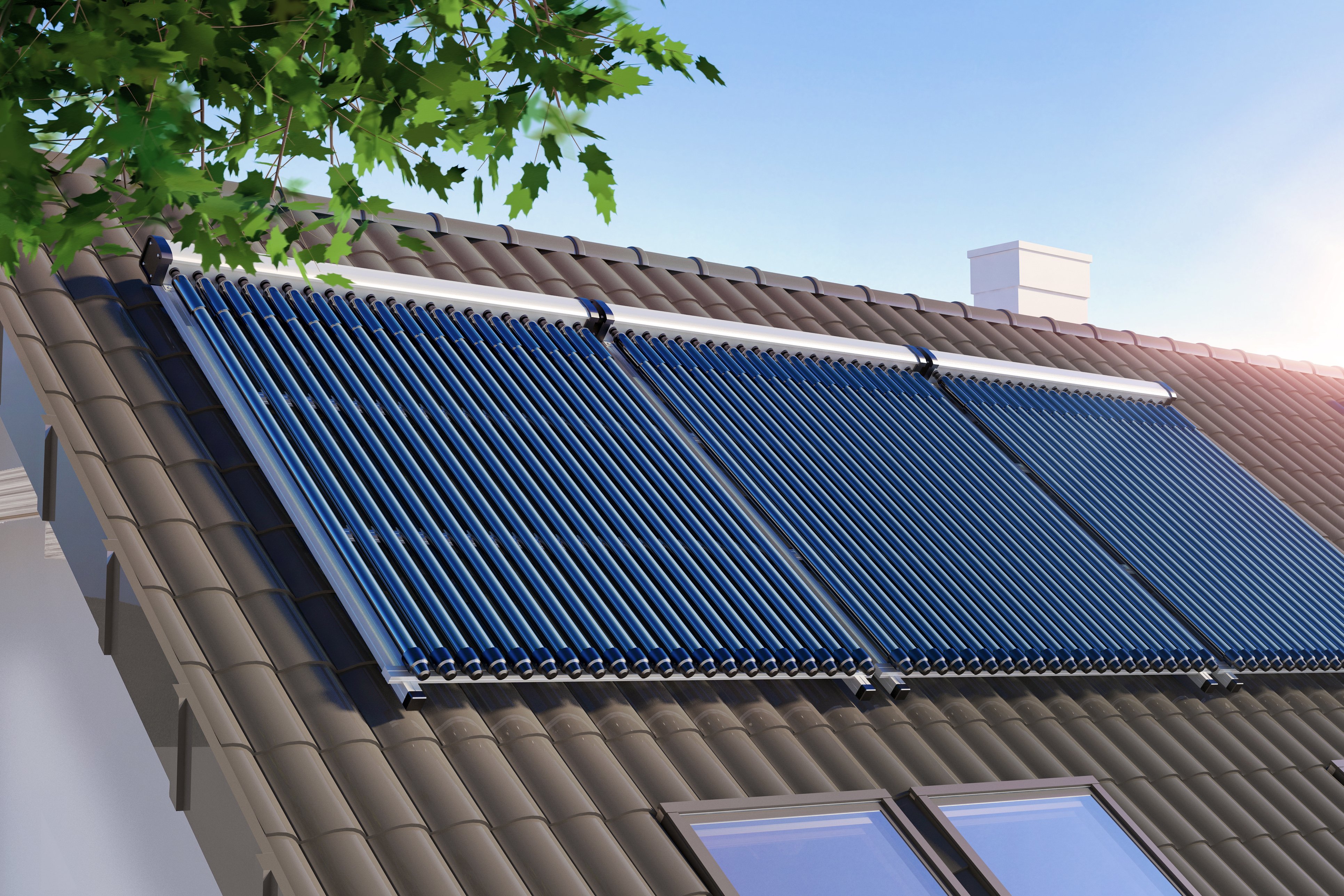The USHGC: Putting the Pieces Together, Part 1
Harnessing and converting solar energy is an environmentally friendly alternative covered by the Uniform Solar, Hydronics and Geothermal Code.

The industry has long recognized the advantages of a statewide adopted solar energy, hydronics and geothermal code. The first edition of the Uniform Solar, Hydronics and Geothermal Code (USHGC) was adopted by the International Association of Plumbing and Mechanical Officials (IAPMO) in 1976. The widespread use of this code over the past three decades by jurisdictions throughout the United States and internationally is a testament to its merit.
First published as the Uniform Solar Energy Code by IAPMO, the USHGC is a code with provisions for alternative energy. It is a national standard accredited by the American National Standards Institute.
The USHGC includes provisions for alternative energy sources to transfer energy in a hydronic system for space heating and cooling or other purposes, such as snow melting. The transfer of energy can occur using the sun’s energy, the earth or a body of water. The sun’s energy can be used to power equipment with solar photovoltaic (PV) systems or heat water or other mediums with the use of solar thermal systems.
For example, Figure 1 shows an open system, which uses a solar thermal, solar PV and hydronic system. Figure 2, as obtained from the USHGC (Appendix D), is an installation diagram of a solar PV system with a utility demand system.

The USHGC brings all of these alternative energy sources into one easy-to-use code that is enforceable and simple to read. The 2021 edition includes provisions for hydronics systems in Chapter 4, solar thermal systems in Chapter 5, geothermal systems in Chapter 7, and solar PV systems in Chapter 8. It also includes an installation standard for residential solar PV systems in Appendix D.
Let’s begin from the top (no pun intended) and discuss how the sun’s energy can be used to heat a swimming pool, as it will be explained by Taylor Duran, technical liaison for the development of the USHGC. The subsequent article in this series will focus on the Radiant Professionals Alliance’s role in the provisions found within the USHGC. In the final article, I will turn to the earth and how it can be utilized as an alternative energy source.
Putting The Sun’s Energy to Work
The sun’s raw energy can be absorbed in two ways: the conversion of sunlight into electricity or the use of the sun’s energy as a direct heat source. The latter (solar thermal) has been in use since 1891 and has recently become mainstream due to various incentives and pressures to use renewable energy sources.
The solar industry now must serve a seemingly insatiable demand. It was only natural that this movement toward renewable energy would become prevalent in all hot water applications, including heating pools. With various benefits, including efficiency, and simple design and installation, solar pool heating systems have become a more eco-conscious way of providing a means of human comfort.
The Uniform Solar, Hydronics & Geothermal Code is a key component to properly installing such systems. The USHGC can be used for properly installing solar pool heating systems, as it lists provisions for materials, installation and prevention of corrosion and heat loss.
Solar pool heating systems primarily consist of a solar collector, a filter, a pump and a flow control valve. The solar collector acts as the device through which pool water is circulated and heated using the sun’s energy. Typically, unglazed collectors are installed for such use due to their simple design, which consists of heavy-duty rubber or plastic treated with an ultraviolet inhibitor to extend the collector’s life.
To protect the solar collector from debris, Section 505.3 of the USHGC lists provisions for filters and their required location within the system. Furthermore, the sizing of the pump used to direct water to the solar collector must also be completed using the manufacturer’s pump performance graphs.

Since these systems use a pump and operate with high flow rates, they are considered active low-temperature systems. This allows for the installation of piping and fittings that are meant for low-temperature applications. Table 409.1, as provided in the USHGC, lists applicable material standards for piping, tubing and fittings and has proven to be an excellent source of material standards for all types of solar thermal systems.
As previously stated, high flow rates are desirable for these systems, but excessively high flow rates must be avoided as they cause erosion of interior pipe and fitting surfaces. This can be achieved by installing appropriately sized piping based on pipe flow charts pertaining to flow rate and correlating pressure drops.
pH Levels, Evaporation
The USHGC also addresses corrosion prevention of solar pool heating systems. Section 505.4 of the USHGC prohibits the use of glazed solar collectors made of copper, as this material may lead to excessive concentrations of copper ions within the pool water. An excessive copper concentration drops the pH of the pool water, causing it to become acidic. This also commonly leads to the formation of colored precipitates along the pool wall.
The acceptable pH range for pool water falls between 7.2 and 7.8, and this range — along with various other acceptable water chemistry parameters — can be found in Table 505.2 of the USHGC. As an added measure, the provisions in the Uniform Swimming Pool, Spa and Hot Tub Code can also be considered; it includes provisions for maintaining water quality not only for bather safety but also the safety of swimming pool system components.
Solar pool heating systems also experience a vast amount of energy loss due to evaporation of heated water. Evaporation rates depend upon various factors, such as air temperature, relative humidity, wind velocity and water agitation. In order to raise 1 pound of water at 1 F, 1 BTU of energy is required; but losing 1 pound of water at 82 F due to evaporation causes a loss of 1,047 BTUs of energy from the pool.
In addition to installing active-type solar systems, passive methods may also be used to decrease the amount of heat lost due to evaporation and increase the efficiency of the overall system. Installing vapor retardant covers when the pool is not in use can drastically improve the system’s ability to meet the desired pool water temperature.
With the increasing demand for alternative energy, a movement has started to harness and convert solar energy as an environmentally friendly alternative. The USHGC provides a means of using this free and renewable energy; through its use, public health and safety — as well as proper installation of solar pool heating systems — can be assured.
Overall, the USHGC is an excellent source for solar pool heating system provisions as they address water quality, installation, material standards, corrosion prevention and various other aspects of such systems.
Hugo Aguilar, P.E., is the vice president of codes and standards at IAPMO. His responsibilities include overseeing the development of both IAPMO Codes Development and IAPMO Standards Department.
Taylor Duran, E.I.T., is a technical code administrator for IAPMO. In her role, she works on the development of the Uniform Solar, Hydronics and Geothermal Code, and the Uniform Swimming Pool, Spa and Hot Tub Code.





